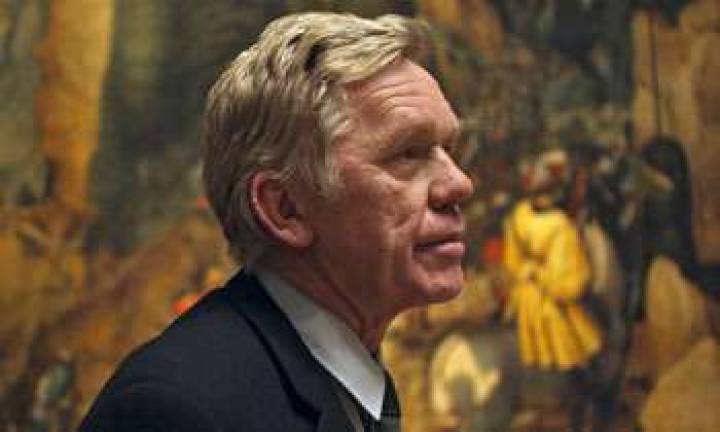Men with Movie Cameras

In Museum Hours and Upstream Color, two American filmmakers become disciples of Dziga Vertov
Go back to Dziga Vertov's 1929 Man with a Movie Camera, the still striking montage experiment (available on Kino Home Video) to find the root concept of two recent art movies, Jem Cohen's Museum Hours and Shane Carruth's Upstream Color.
Museum Hours is eccentric for an American feature; its narrative context is the developing friendship, based on cultural curiosity, of Johann (Bobby Sommar), a security guard at Austria's Kunsthistoisches museum, and a Canadian woman, Anne (played by singer Mary Margaret O'Hara) who's visiting a hospitalized relative. Johann's reflections on art and the Vienna environs assist Anne's tourism--a guide to appreciating transient life. Their lengthy digressions become the story as in Upstream Color which built its narrative of a woman Kris (Amy Seimetz) and man Jeff (Carruth) falling in love through a constant hybrid of sci-fi, existential and romantic visual juxtapositions.
Both films foreground their structure, using formal devices to access evanescent emotions and artistic perceptions. Such artiness is not new. Vertov's movie began with the introduction "This film presents an experiment in the Cinematic Communication of Visible Events aims at creating a truly international absolute language of Cinema based on its total separation from the language of Theatre and Literature." Almost a hundred years later the only difference is our culture's surprise that visual communication is the way cinema works.
Museum Hours takes this understanding back to its roots in painting and sculpture while Upstream Color goes for modern poetics and palpably distorts it. Carruth perverts Vertov's awe; his pattern-based, scientific approach to storytelling sees the wonder of life similar to silent movies (enthrallment with montage) but without Vertov's post-Victorian sentiment or Soviet purpose. Carruth's use of ellipsis and mystery and fragmentation become an end in themselves. He begins with Fear and menace, secrets, deception, violence, violation, telling four interlocked stories (including endangered children and a sound recordist). It's both an intellectual conceit with its own esoteric motto ("You can force your story's shape but the colors will always bloom upstream") and an actorly conceit (Carruth, who resembles the actor Dan Futterman in Urbania, gives himself significant screen time).
Follow Armond White on Twitter at 3xchair